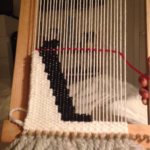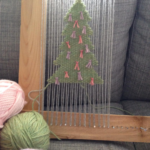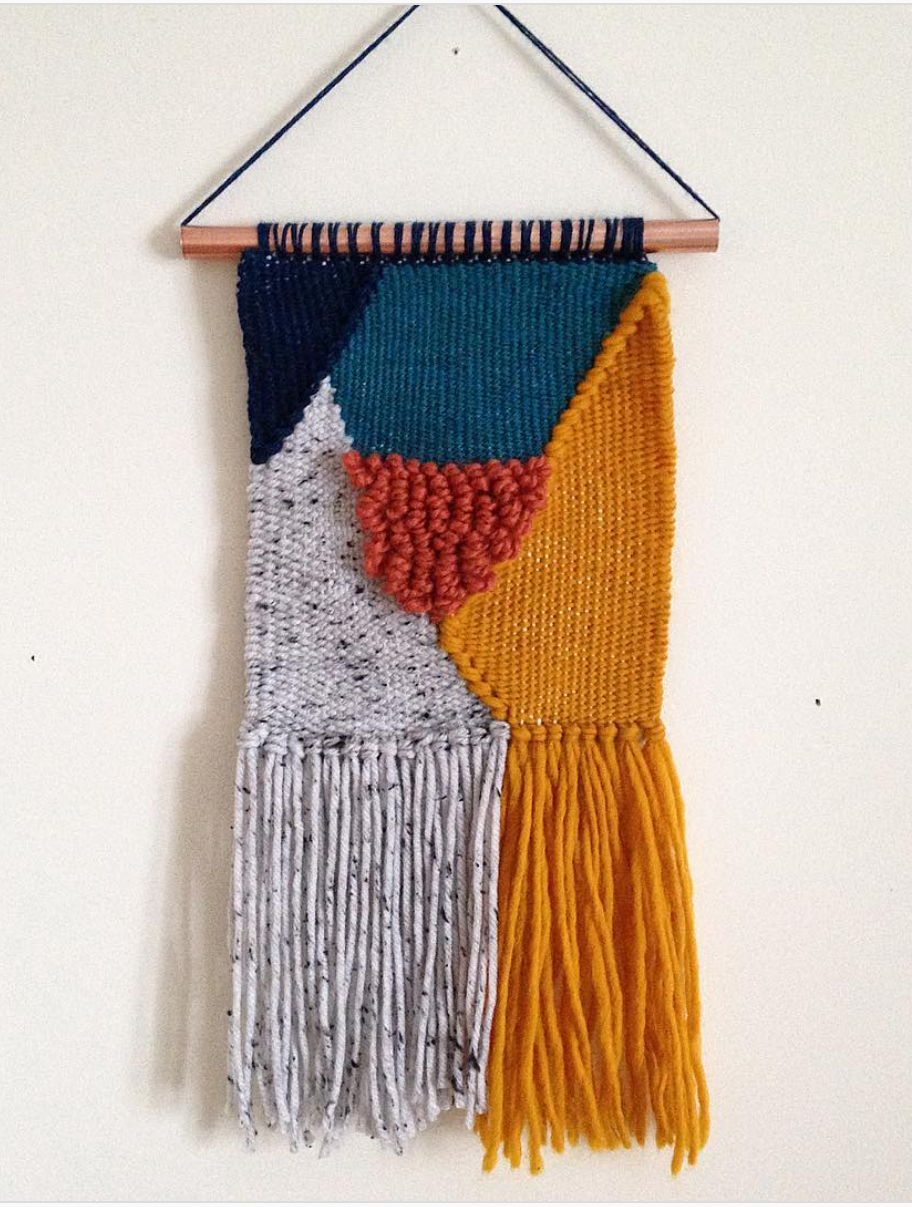
Hey y’all and welcome to my crafting corner! Today I am going to share with you a bit of information on how to get started with weaving. I will go over the basic materials needed, where to find some of these materials and provide you with some resources for learning as you go!
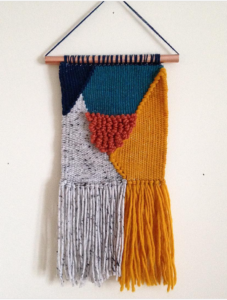
What is weaving?
Weaving is basically where vertical strands of yarn (called the warp) have horizontal strands of yarn (called the weft) woven over top. The warp is the base that allows you to get creative with many different weaving techniques for the weft. The simplest woven technique is called tabby weaving. This is were you take a weft strand and move it over and under, over and under repeatedly across the warp to create a design. In order to do this and other techniques effectively, you need a few basic tools and materials.
Materials
With weaving, a few basic materials are needed: a loom, tapestry needle, weaving comb, shed stick, scissors and yarn. Now, you can get creative with these materials and use a fork instead of a weaving comb or a picture frame instead of a loom. However, these are the tools I would recommend investing in if you actually want to weave regularly. If you’re just doing one single project for fun, certainly use the resources around your house instead of splurging on fancier items.
So lets actually dive into what each of these materials are.
First off – a loom. A loom of some sorts is needed. As I mentioned above, this can be a picture frame or even a stick that has a “Y” shape to it, but I like a simple wooden loom. I have several pictures below showing my progression with looms. Keenan has made most of the ones that I’ve used, so this is also a chance to brag on my hubby for upgrading my looms as my skills upgraded! If you look along the top and bottom of each loom, you’ll notice there are bigger pegs, then nails and then notches. All three work well, but looms with notches have become my favorite. They are uniform and smooth, so it doesn’t hurt if your arm rests on it and your fibres won’t snag as easily. Most craft stores will sell some sort of loom and you can always order them online. In fact, there are some excellent Etsy shops that sell handmade looms. Linked are several here, here, here and here.
Next we have a tapestry needle. This to me is a must no matter what. You can get them super cheap at Michaels or a yarn store. You can weave your design with your fingers, but adding in little details and tucking the lose strands in at the end of the project require a tapestry needle. They are basically just bigger plastic needles with a wide eye and blunt ends.
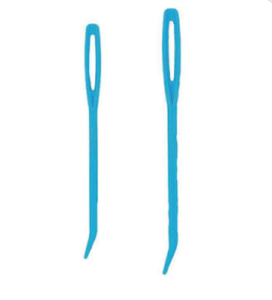
The next two items are some what “splurgy” items, but totally worth it if you are looking to weave a lot. These items are the weaving comb and the shed stick. A weaving comb is used to beat each weft row into place as you go. You can use a fork or a regular comb for this, but I love my handcrafted one. I have used a fork before, but found that it sometimes catches the yarn which I am not a fan of. You can also just use your fingers for this, but again, the weaving comb works way better. A shed stick is used to go over and under the warp threads. Putting a shed stick in place allows you to open the warp and quickly pass the tapestry needle through. This is super beneficial when you are having to weave with your non-dominate hand and if you are doing a lot of tabby weaving. You can use a ruler instead of a shed stick or not use anything at all. However, it does make the weaving process quicker!
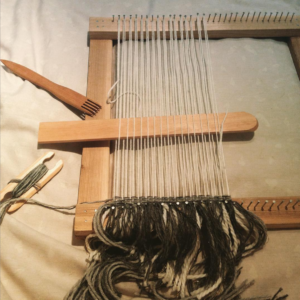
And lastly – yarn! This is where you can get really creative. I mainly only use yarn when weaving, but you can use fabric, ribbon or even a string of beads or pompoms. The options are somewhat endless! I do recommend using a sturdy cotton yarn to create your warp though. This type of yarn shouldn’t have any give to it, which is important for keeping the shape of your weaving in tact. Also, using a yarn like this is helpful to weave intermittently in your weft if you are using something like beads or ribbon, which are less sturdy. Again this will help preserve the shape of your weaving.
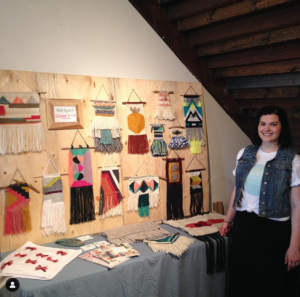
Resources
The first resource I ever used for weaving was a tutorial from A Beautiful Mess. I mentioned it in a previous post titled Crafting Corner: My Crafting Journey, and highly recommend checking the tutorial out. I am linking the weaving archive from A Beautiful Mess because they have several more tutorials that are worth checking out. I then purchased several weaving books, but my favorite that I have bought so far is DIY Woven Art by Rachel Denbow. I also highly recommend any and all courses by Hello Hydrangea. She has two weaving books, Welcome to Weaving and Welcome to Weaving 2, which I have yet to buy (don’t ask me why… I am insane for not purchasing them yet because I actually need them in my life!). She also has LOTS of online programs for purchase. I have subscribed to her monthly weaving series and LOVE it! She provides a PDF with instructions and video recordings, which are super helpful. There are many other weavers out there who make for great resources, these are just two of my favorites.
If you are really into weaving, give me a shout as I would love to pass on more information. Also, Instagram is a great place to browse different styles of weaving and become familiar with some popular artists. I am listing several of my favorites below.
- Hello Hydrangea – Lindsey Campbell
- Smile and Wave – Rachel Denbow
- Nova Mercury – Jen Duffin
- Spruce and Linen – Jenell Flynn
- Lola Mott – Lola
- Little Woven Co – Spencer
- The Woven Hand – Kat
I hope you found all of that helpful! It’s super basic info, but will hopefully give you an idea of where to start if you are interested. Let me know if you try it out! Happy day, y’all!
